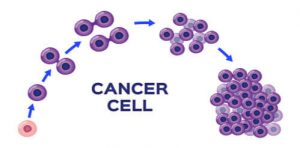


உங்களுக்கு புற்று நோய் இருந்தால், அதன் வளர்ச்சி எந்தளவிற்கு வளரும் என்பதை மருத்துவர்கள் தெரிந்து கொள்ள வேண்டும்.
புற்றுநோயின் நிலைகள் புற்றுநோயின் தீவிரத்தை மதிப்பிடுவதற்கான சோதனைகளின் அடிப்படையில் மருத்துவர்கள் வழங்கும் தரவரிசை ஆகும். பிரித்தெடுக்கப்பட்ட திசுக்களுக்குள் உடலில் இருந்து எவ்வளவு புற்றுநோய் பரவியுள்ளது என்பதை கண்டறிய ஆய்வக சோதனைகளும் பயன்படுத்தப்படுகின்றன. புற்றுநோயை நிலைநிறுத்த இமேஜிங் நுட்பங்களையும் பயன்படுத்தலாம். இமேஜிங் சோதனைகள் உடலின் உட்புறத்தின் படங்களை எடுக்கின்றன. புற்றுநோய் எங்கு உருவாகிறது மற்றும் பரவுகிறது என்பதைப் பார்க்க உங்கள் மருத்துவர்களுக்கு படங்கள் உதவுகின்றன.
சமீபகாலமாக, உங்கள் உடலில் எங்கு, எவ்வளவு புற்றுநோய் உள்ளது என்பதைத் தவிர மற்ற புற்றுநோய்களை நிலைநிறுத்த அறிவு பயன்படுத்தப்படுகிறது. இந்த விவரங்களில் இரத்தப் பரிசோதனைகளின் முடிவுகள், ஹிஸ்டாலஜிக்கல் (செல்) சோதனைகளின் முடிவுகள் மற்றும் ஆபத்து காரணிகள் இருக்கலாம். ஒரு ஆபத்து காரணி என்பது புற்றுநோயின் விரைவான வளர்ச்சி போன்ற ஆரோக்கிய நிகழ்வின் சாத்தியக்கூறுகளை எழுப்புகிறது. உங்கள் உடலில் புற்றுநோய் நிலைகளுக்கு எங்கே, எவ்வளவு புற்றுநோய் இன்னும் முக்கியமானது.

புற்றுநோயை நிலைநிறுத்துவது பல காரணங்களுக்காக முக்கியமானது. Often your doctors will determine if you need further cancer-based tests. The stage of cancer is also one of the criteria used by doctors to determine a prognosis. Prognosis is a scientific term for the pattern and outcome predicted of a disease. Most importantly, the stage of cancer is a consideration the doctors use to determine which therapies are best for you. The cancer stage is used in research to evaluate treatment outcomes across patient groups, to compare results between treatment centres, and to plan study studies.
புற்றுநோய் பெரும்பாலும் இரண்டு முறை நடத்தப்படுகிறது. சிகிச்சைக்கு முன், முதல் மதிப்பீடு செய்யப்படுகிறது மற்றும் மருத்துவ நிலை என்று அழைக்கப்படுகிறது. நோயறிதலுக்குப் பிறகு, இரண்டாவது நிலை போன்ற சிகிச்சைகளுக்குப் பிறகு செய்யப்படுகிறது அறுவை சிகிச்சை மற்றும் நோயியல் நிலை என்று அழைக்கப்படுகிறது. புற்றுநோயின் நோயியல் நிலை மிகவும் குறிப்பிட்டது.
தொடர்ச்சியான புற்றுநோய் has (recurred) returned since it was treated. It returns to the same place or another part of the body.

Typically, higher numbers mean more widespread disease, greater tumour size and/or cancer spread beyond the organ where it first grew. Higher grade and stage cancers tend to be more difficult to cure and also need heavy treatments. When assigned a stage and provided care, the stage is never changed. A stage I cancer of the cervix, for example, is treated. The same cancer has spread two years later and is now contained in the heart. It is not stage IV now but stage I, with recurrence to the lung.
The main thing about staging is that it decides the correct treatment, lets healthcare professionals make a prognosis, and enables the outcomes of the procedure to be compared. The grade and stage of cancer can be extremely complex and confusing. Be sure to ask your healthcare professional to explain this cancer information to you in a manner you would understand.